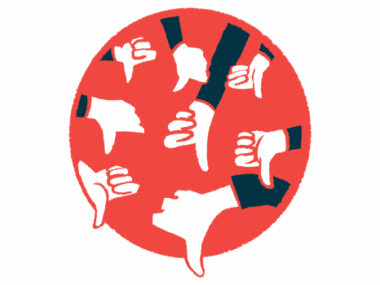Corticosteroid-based Creams Can Cause Secondary Cushing’s Syndrome in Infants, Case Report Shows
Written by |

Using topical creams with high corticosteroid concentrations to manage skin rash in infants can lead to the development of drug-related secondary Cushing’s syndrome, a case report shows.
Therefore, the public needs to be made more aware of the adverse effects of these treatments in this young population, researchers say.
Their study, “A Case of Iatrogenic Cushing Syndrome Secondary to Application of Topical Corticosteroids,” was published in the Indian Dermatology Online Journal.
Cushing’s syndrome is a condition that appears when too much cortisol exists in circulation. The condition may be caused by tumors that produce too much cortisol, or tumors that produce the adrenocorticotropic hormone telling the adrenal glands to secrete cortisol.
But the most common cause of the syndrome is prolonged exposure to glucocorticoid products. This subtype of the condition, called iactrogenic or drug-related Cushing’s syndrome, is commonly seen in clinical practice.
The condition is usually found in adults, but infants and children can experience glucocorticoid side effects as well. In fact, children are more likely to develop these side effects due to their bodies’ increased ability to absorb topical medications.
In the study, researchers in India reported the case of a 3-month-old boy who developed iatrogenic Cushing’s syndrome after prolonged exposure to topical corticosteroids.
The baby had signs of body swelling, irritability, skin rash, and decreased appetite when he was admitted to hospital. He had appeared healthy until 2.5 months prior, when some skin rashes showed up on his face, scalp, and trunk.
The parents had visited a local practitioner of alternative medicine, who recommended a combination of a strong topical steroid and a skin care product until the rash was resolved.
The treatment seemed to help, but the rashes returned after the parents stopped applying it, so they continued the treatment for two months. During this time, the boy gained weight rapidly and developed facial swelling.
They stopped applying the cream one week prior to going to the hospital, after which the skin’s lesions worsened and systemic symptoms appeared.
An initial examination showed several symptoms of Cushing’s syndrome, including truncal obesity, “moon faces,” and “buffalo hump” (an accumulation of fatty tissue in the upper back, close to the neck). He also had skin lesions on his entire body, with mild inflammation and scaling.
Due to excess weight, the baby had skin lesions in his neck, axillae, and groin folds, caused by excessive skin-on-skin rubbing. These lesions had pustules consistent with skin yeast infection.
The symptoms all pointed to Cushing’s syndrome secondary to corticosteroid use, which was confirmed by elevated cortisol levels for his age — 20.7 μg/dl, compared to the normal value of 9.075 μg/dl — and an absence of an adrenal mass.
To avoid an adrenal crisis triggered by a sudden absence of corticosteroids, the patient was put on systemic hydrocortisone with gradual tapering, and he started losing weight. He was also prescribed medications to treat his skin rash and yeast infection.
“In infants and children, the use of topical corticosteroids should be judicious,” the researchers said. “They are more likely to develop the systemic side effects” due to a higher absorption of topical medication, “as their body surface area to weight ratio is high and skin has poorly developed barrier function.”
“Our case highlights the need to increase the awareness and appropriate education of the general public regarding the dermatological problems and need to visit qualified dermatologists for skin problems,” the researchers said.





